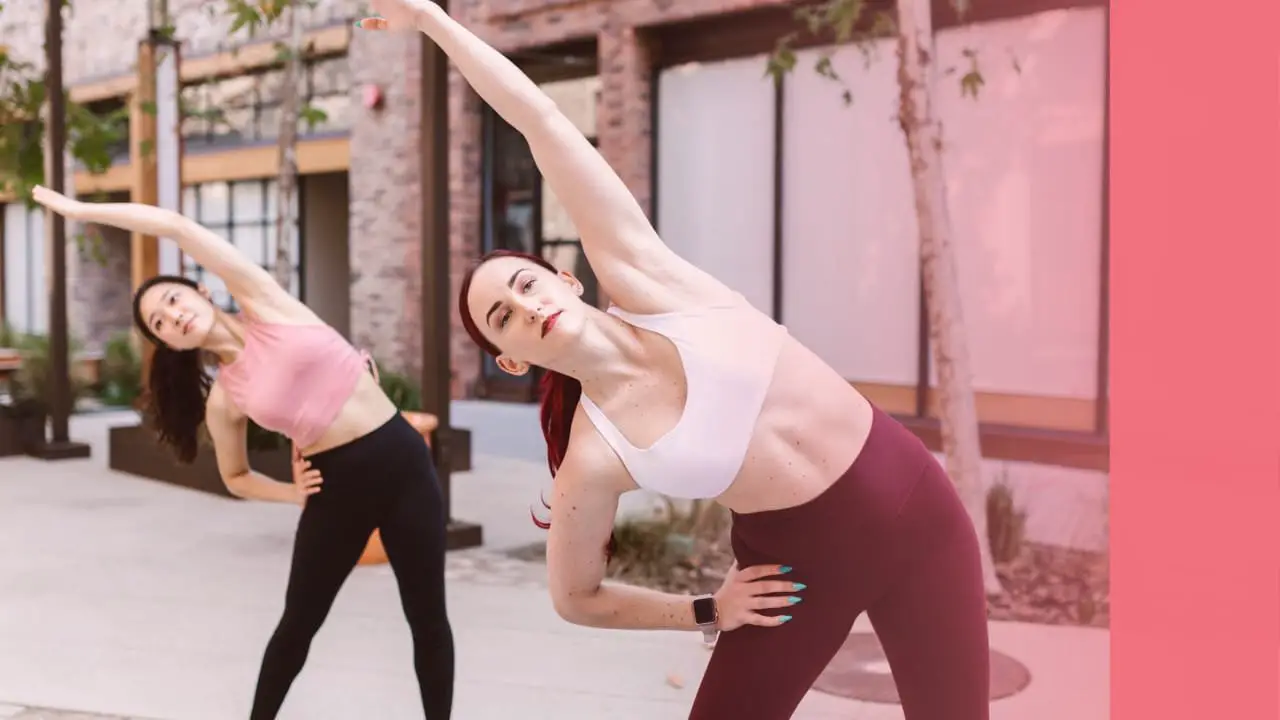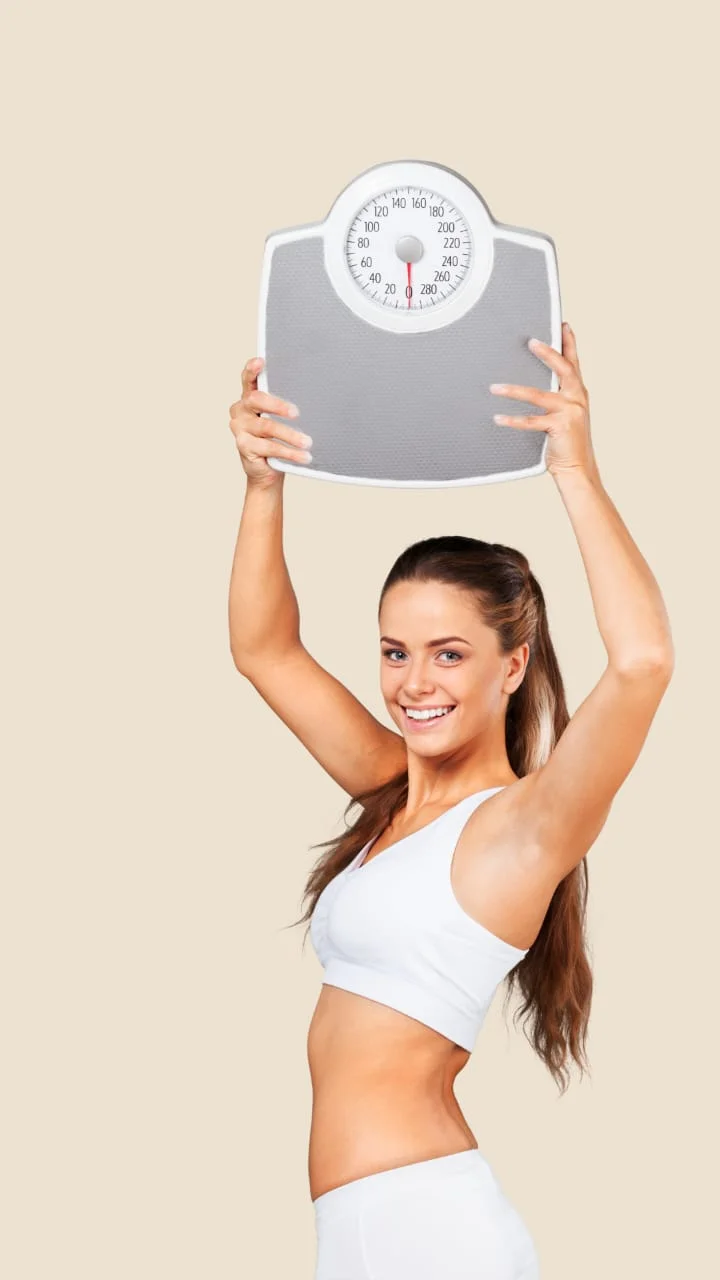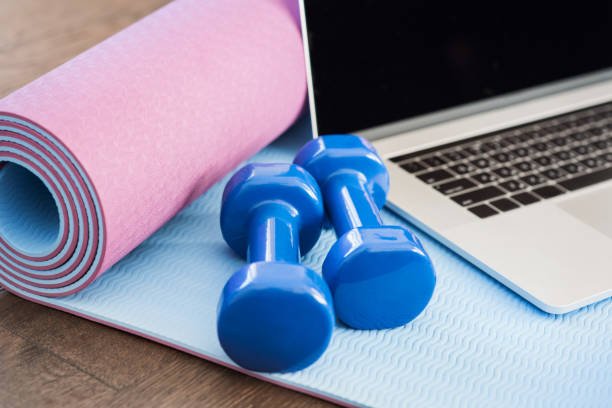Beginner’s Guide: Easy Workout Routine to Get Started
Introduction to Fitness for Beginners
Embarking on a fitness journey can be both exciting and daunting, particularly for those who are new to the world of exercise. Fitness, in its broadest sense, encompasses various physical activities designed to enhance overall health, fitness levels, and well-being. Engaging in regular exercise can lead to improved cardiovascular health, increased strength, enhanced flexibility, and weight management. Additionally, physical activity has been shown to boost mental health by reducing symptoms of anxiety and depression and enhancing overall mood.
For beginners, the notion of starting a fitness routine may be intimidating due to common misconceptions surrounding the concept of working out. Many people believe that they need to be in top shape or possess specialized equipment to begin an exercise regimen. However, it is crucial to recognize that fitness is a personal journey, and every individual has their unique starting point. Establishing a routine does not necessarily require extravagant gym memberships or extensive knowledge; simple movements performed regularly can yield significant health benefits.
Moreover, fitness should not be equated with harsh workouts or intense training sessions. Instead, it can be accessible and enjoyable, allowing individuals to discover physical activities that resonate with them. Whether it is walking, stretching, or engaging in body-weight exercises, the key is consistency and gradually building upon one’s capabilities. As you consider starting your fitness journey, remember that every small step counts toward enhancement of your overall well-being, and that the most important aspect is to stay active and motivated. Embrace the idea that you have the power to improve your health and lead a more fulfilling life through physical activity, regardless of where you begin.
Setting Realistic Fitness Goals
Establishing realistic fitness goals is a critical step in any exercise journey. Without clear objectives, individuals may struggle to maintain motivation or track progress. Setting goals that adhere to the SMART criteria—Specific, Measurable, Achievable, Relevant, and Time-bound—ensures that your objectives are not only clear but also attainable. For example, instead of saying, “I want to get fit,” a SMART goal might be, “I will run 3 times a week for 20 minutes over the next month.” This specific approach provides clarity and direction.
Each component of the SMART framework plays a vital role in your fitness journey. Specific goals eliminate ambiguity, making it easier to focus efforts. Measurable goals allow for the tracking of progress, providing a tangible way to recognize improvement. Achievable implies that the goals set should be challenging yet within reach, as unrealistic targets can lead to frustration and setback. Relevant ensures that goals align with one’s broader aspirations, while Time-bound establishes a deadline, instilling a sense of urgency and commitment.
The psychological benefits of setting defined fitness goals are substantial. Individuals often experience increased motivation and commitment when they have tangible targets to pursue. Furthermore, achieving these goals—whether short-term, such as attending a fitness class twice a week, or long-term, like completing a half-marathon—can significantly enhance self-confidence and self-esteem. Evidence shows that the satisfaction derived from reaching these milestones can create a positive feedback loop, encouraging further engagement in physical activity.
Ultimately, it is essential to remember that setting realistic fitness goals is not simply about the end result but about fostering a healthy relationship with exercise and personal well-being. As one progresses, it is beneficial to revisit and adjust these goals to reflect growth and changing aspirations in the fitness journey.
Choosing the Right Type of Workout
When embarking on a fitness journey, selecting the right type of workout is crucial for fostering motivation and ensuring sustainable progress. Beginners might find the array of workout options overwhelming, but understanding the key categories will aid in tailoring a routine that aligns with personal preferences and fitness levels.
Cardiovascular exercises, commonly known as cardio, are an excellent starting point for beginners. Activities such as walking, jogging, cycling, and swimming are not only effective for enhancing cardiovascular health but also assist in burning calories and improving endurance. Incorporating these exercises into a weekly routine is beneficial as they can be adjusted in intensity and duration, making them accessible for various fitness levels.
Strength training is another essential component of a well-rounded fitness program. Using bodyweight exercises, resistance bands, or weights, beginners can engage in workouts that build muscle strength and improve metabolism. Starting with foundational movements like squats, push-ups, and lunges can establish a robust strength training foundation, leading to increased overall fitness and functional performance.
In addition to cardio and strength work, flexibility workouts play a vital role in a beginner’s routine. Activities such as yoga or stretching exercises enhance flexibility, promote recovery, and decrease injury risk. Allocating time for flexibility training can yield significant benefits, especially for those engaged in more intense workout regimens.
Lastly, balance exercises are often overlooked but they are critical, especially for beginners seeking to enhance stability and coordination. Simple workouts such as standing on one foot or participating in Pilates can significantly improve balance, contributing to better overall functional fitness.
By integrating various types of workouts, beginners can create a dynamic fitness routine that keeps them engaged and motivated. The key is to choose workouts that resonate with individual goals and preferences, ensuring a fulfilling and sustainable fitness experience.
Basic Equipment Needed for Your Workouts
Starting an exercise routine can be made more effective with the right equipment. While it is possible to perform numerous workouts using just your body weight, incorporating basic tools can enhance your overall experience and effectiveness. For beginners, a set of dumbbells is highly recommended. These versatile weights can be used to strengthen various muscle groups and are available in different sizes, allowing for customization based on personal fitness levels. Adjustable dumbbells can be particularly beneficial as they save space while providing flexibility in workout intensity.
Resistance bands are another excellent addition to a beginner’s workout toolkit. They offer a wide range of exercises and can easily be adjusted for different resistance levels, making them suitable for progressively enhancing strength. Lightweight and portable, resistance bands are perfect for home workouts, travel, or even outdoor sessions.
A yoga mat is often considered essential for any workout routine, especially those involving floor exercises or stretching. It provides cushioning and stability, which can lead to a safer and more comfortable workout. For added versatility, a stability ball can be useful as it engages multiple core muscles while allowing for a variety of exercises that target strength and balance.
When it comes to sourcing equipment, local sporting goods stores, online retailers, and second-hand shops can offer economical options. For those on a tighter budget, household items can serve as substitutes; for example, filled water bottles can act as dumbbells, and towels can be used for stretching and support. In many cases, effective workouts rely much more on your willingness and commitment than on the equipment.
Ultimately, while basic workout equipment can enhance your exercises, it is crucial to remember that many effective workouts can be performed with minimal or no tools. The key is to focus on building a routine that suits your personal fitness goals and preferences.
Example of an Easy Workout Routine for Beginners
Embarking on a fitness journey can be daunting, particularly for beginners. To assist in this endeavor, we present a simple four-week workout plan that encompasses a blend of cardio, strength, and flexibility exercises. This routine is designed to cater specifically to those new to fitness, enabling them to build a solid foundation while steadily improving their overall health and well-being.
Week 1: Begin with three workout days, ideally spread throughout the week. Each session will consist of:
- 15 minutes of brisk walking: This serves as a warm-up to elevate the heart rate.
- Bodyweight squats: 2 sets of 10 repetitions, focusing on aligning your knees with your toes and maintaining a straight back.
- Push-ups: 2 sets of 5-10 repetitions; beginners can start with knee push-ups to maintain proper form.
- Stretching: Conclude with 5-10 minutes of hamstring and quadriceps stretches.
Week 2: Increase the intensity slightly by adding an additional workout day. Each of the four sessions will include:
- 20 minutes of jogging: A gentle pace that allows for conversation.
- Lunges: 2 sets of 8 repetitions per leg, ensuring the knee does not extend beyond the toes.
- Plank: 2 sets of holding for 15-30 seconds, engaging the core for stability.
- Stretching: Focus on deep breathing during the stretches.
Week 3: Introduce a mix of exercises for a balanced routine, maintaining four workout days:
- 25 minutes of cycling: A low-impact way to boost cardio endurance.
- Glute bridges: 2 sets of 10 repetitions, focusing on core engagement.
- Superman pose: 2 sets of holding for 20 seconds, promoting back strength.
- Stretching: Aim for extended hold times to enhance flexibility.
Week 4: The final week can incorporate a complete-body approach. Plan for four sessions with:
- 30 minutes of dancing: A fun way to increase heart rate while promoting movement.
- Chair dips: 2 sets of 8-10 repetitions to focus on arm strength.
- Seated forward bend: 2 sets of holding for 15-30 seconds for improved flexibility.
- Cool-down stretches: Emphasize relaxation and recovery.
This beginner-friendly workout routine lays the groundwork for further advancement in fitness. With consistent effort and proper form, one can experience significant improvements in strength, endurance, and overall physical health.
The Importance of Warming Up and Cooling Down
Warming up and cooling down are integral components of any effective workout routine. These practices serve to prepare the body for physical activity and facilitate recovery afterward, ultimately making workouts safer and more beneficial. A proper warm-up gradually raises the heart rate, increases blood flow to the muscles, and enhances overall mobility. By engaging in low-intensity exercises, such as brisk walking or dynamic stretches, individuals activate their cardiovascular system, which helps prevent injuries during more rigorous exercises.
Additionally, warming up helps to increase the elasticity of the muscles and tendons, reducing the likelihood of strains and sprains. Exercises like arm circles, leg swings, or hip openers can be particularly effective in improving joint mobility and muscle readiness. A general recommendation is to spend at least 5 to 10 minutes on warm-up activities prior to engaging in high-intensity workouts.
Cooling down, on the other hand, plays a significant role in recovery. Post-exercise, the body requires a gradual return to a resting state, which helps normalize heart rate and breathing. Cooling down also aids in muscle recovery by reducing the accumulation of lactic acid, thereby diminishing muscle soreness and stiffness. Effective cool-down practices can include static stretching or gentle yoga poses that target the major muscle groups involved in the workout.
To incorporate these essential practices into a workout routine, it is important to allocate sufficient time before and after each session. Setting aside 5 to 10 minutes for each phase ensures that the body can transition smoothly into and out of exercise. Moreover, consistency in these habits promotes long-term benefits, contributing to overall fitness and well-being while significantly reducing the risk of injury.
Tips for Staying Motivated and Consistent
Staying motivated and consistent with a workout routine can be challenging, especially for beginners. However, implementing effective strategies can significantly enhance adherence to your fitness goals. One of the first steps is to establish a structured schedule. Setting specific days and times for workouts helps create a routine, allowing physical activity to become a non-negotiable part of your daily life. Additionally, consider aligning your workouts with times you feel most energetic, which can lead to more productive sessions.
Finding a workout buddy can provide another layer of motivation. Exercising with a friend not only makes workouts more enjoyable but also fosters accountability. When both individuals commit to a shared fitness journey, they are more likely to support one another through challenges and maintain consistency. This partnership can help mitigate feelings of isolation, making the fitness journey less daunting.
Tracking progress is a vital component of any successful fitness routine. Keeping a journal or using fitness apps to log workouts, monitor improvements, and visualize your journey can maintain motivation over time. Celebrating small victories along the way, such as completing a particularly tough workout or achieving a personal best in terms of time, can boost self-confidence and encourage further progress.
Common obstacles to consistency include a busy schedule, lack of time, or even boredom with workouts. To counter these challenges, consider incorporating flexibility into your routine. On days when schedules become congested, opt for shorter, high-intensity workouts or a quick home session. To combat boredom, vary your workouts by trying new classes or different exercises to keep your routine fresh and engaging.
Ultimately, maintaining motivation and consistency in a workout routine requires planning, support, progress tracking, and a willingness to adapt. By applying these strategies, you can create a sustainable fitness journey that aligns with your lifestyle.
Listening to Your Body: Rest and Recovery
Rest and recovery are vital components of any effective workout routine, particularly for beginners. Engaging in physical activity without allowing the body ample time to recuperate can lead to burnout and increase the risk of injuries. It is essential to listen to your body and recognize its signals, which serve as critical indicators of when to continue your regimen and when to take a break.
One of the most straightforward ways to avoid overtraining is to incorporate rest days into your routine. Rest days are not a sign of weakness; rather, they are an opportunity for your muscles to repair and grow stronger. Depending on your fitness level and workout intensity, incorporating one to two rest days each week can significantly enhance your overall performance. During these days, you might focus on light activities such as walking or yoga, which can aid in recovery without putting undue stress on your body.
To facilitate optimal recovery, consider paying attention to three key areas: hydration, nutrition, and stretching. Staying well-hydrated is crucial, as water plays a significant role in muscle function and recovery. Dehydration can lead to fatigue and decreased performance. Nutritionally, consuming a balanced diet rich in proteins, carbohydrates, and healthy fats is essential for muscle repair and energy replenishment. Aim to include foods that promote recovery, such as lean meats, whole grains, and plenty of fruits and vegetables.
Moreover, incorporating gentle stretching routines can help alleviate muscle tension and enhance flexibility. Stretching can be particularly beneficial after a workout, as it aids in reducing soreness and improving overall muscle function. By focusing on these aspects of rest and recovery, individuals can effectively listen to their bodies and create a more sustainable and rewarding workout routine.
Conclusion: Embracing Your Fitness Journey
As we conclude this guide on establishing an easy workout routine, it is essential to recognize that embarking on a fitness journey is a deeply personal experience. Each individual has unique goals, challenges, and timelines, making it vital to appreciate and respect one’s own path towards health and wellness. Progress in fitness, whether in strength, endurance, or overall well-being, is rarely linear. There will be days of triumph and moments of frustration, and this variability is a natural part of the journey.
For beginners, the key lies in consistency and patience. It is easy to set grand expectations and seek immediate results, but lasting change takes time. Embracing this duration allows one to gradually build strength, improve fitness levels, and develop a healthier lifestyle. Instead of fixating solely on the end goal, focus on the small milestones along the way, whether it’s increasing workout frequency, lifting heavier weights, or simply feeling more energized throughout the day.
Moreover, nurturing a positive mindset can significantly enhance your fitness experience. Surround yourself with support, whether from family, friends, or a community of fellow fitness enthusiasts. Sharing your goals and experiences with others fosters motivation and accountability. Remember, everyone is at a different stage of their fitness journey, and comparing yourself to others can detract from your own progress. Celebrate your achievements, no matter how small, as each step brings you closer to your desired state of health.
Ultimately, the commitment to personal fitness is a lifelong endeavor. By embracing your unique journey and remaining patient, you empower yourself to make sustainable lifestyle changes. Each workout and every effort contributes to your growth, both physically and mentally. Stay dedicated, and allow your fitness journey to unfold naturally. Your path is yours to navigate, filled with opportunities for improvement and self-discovery.







